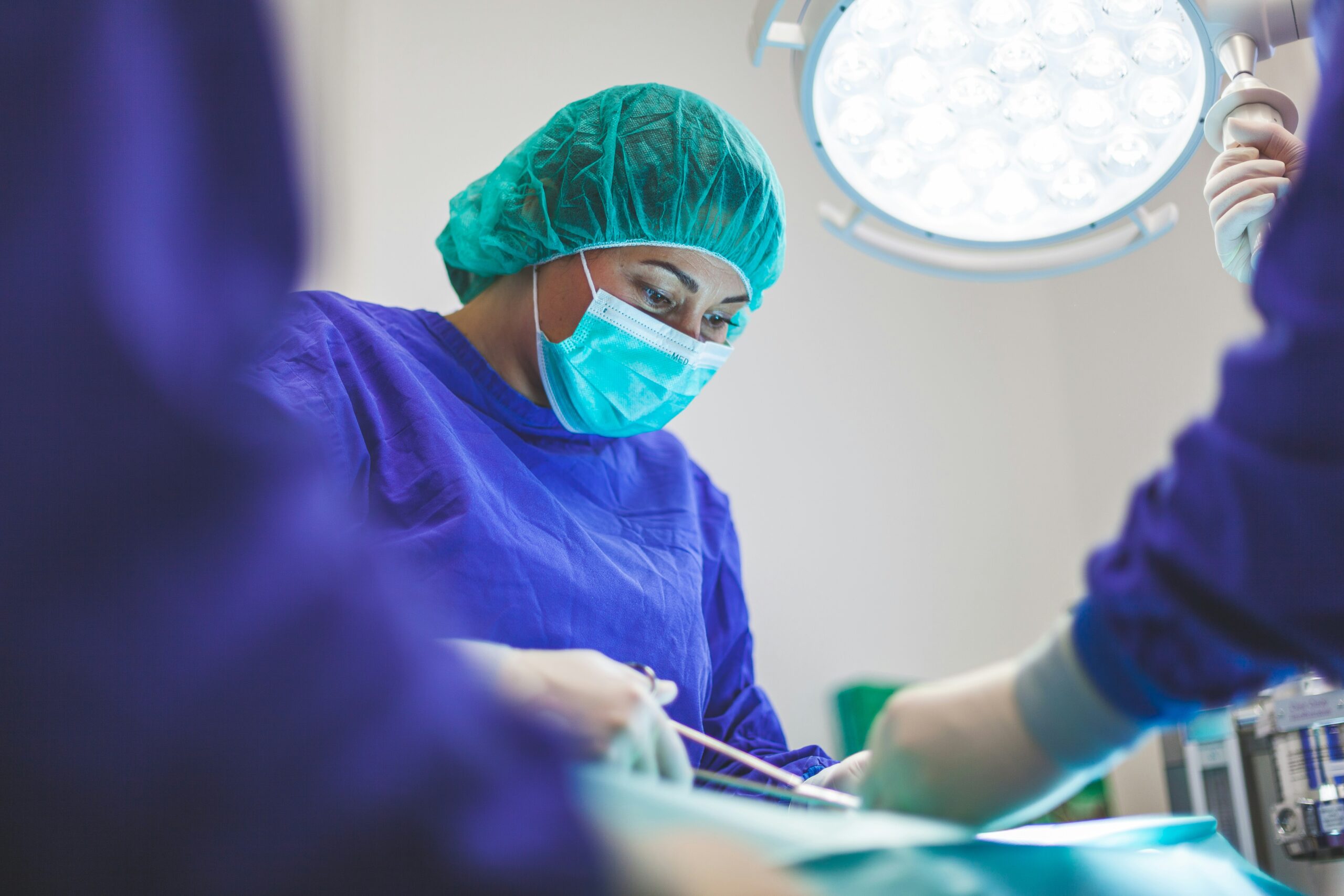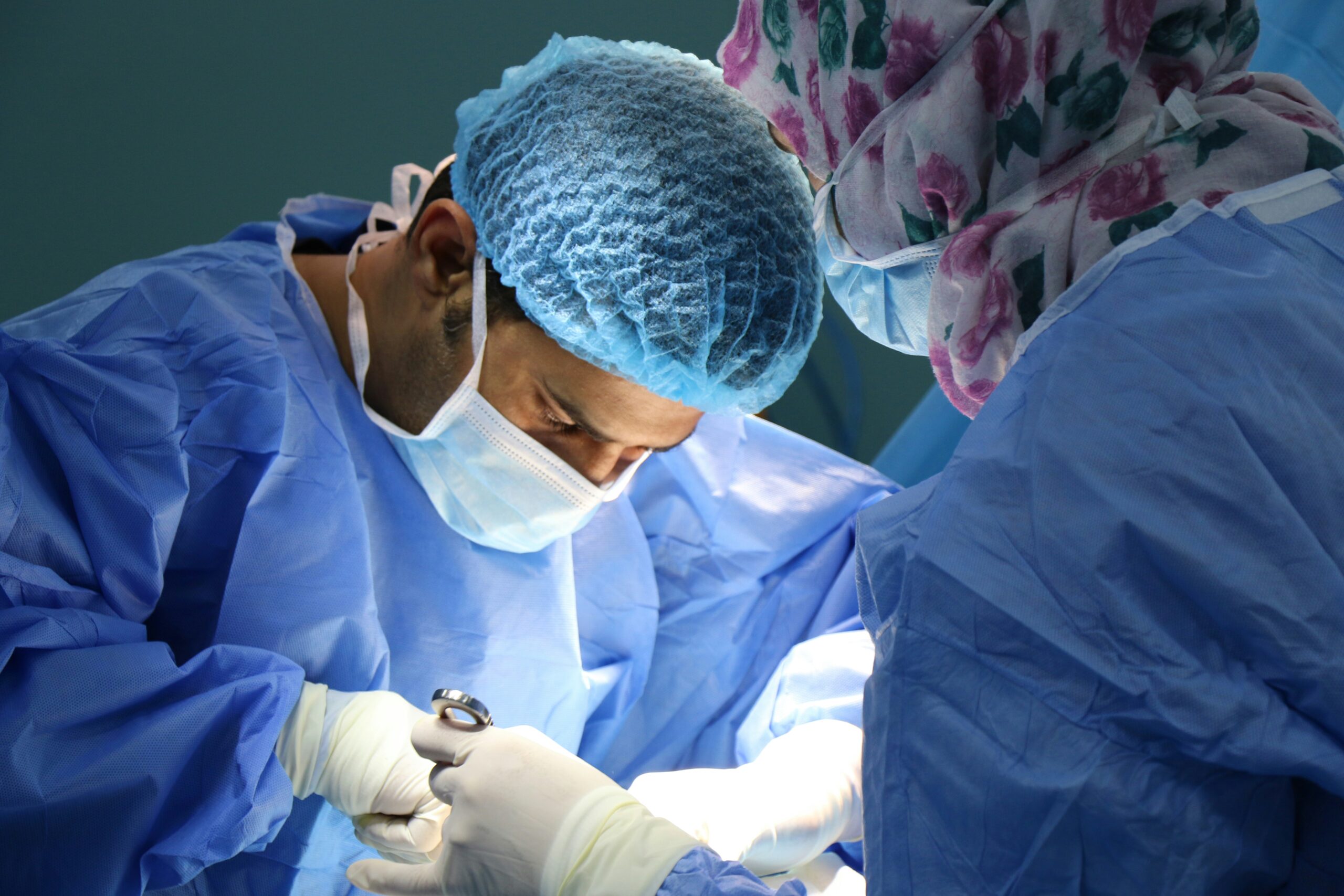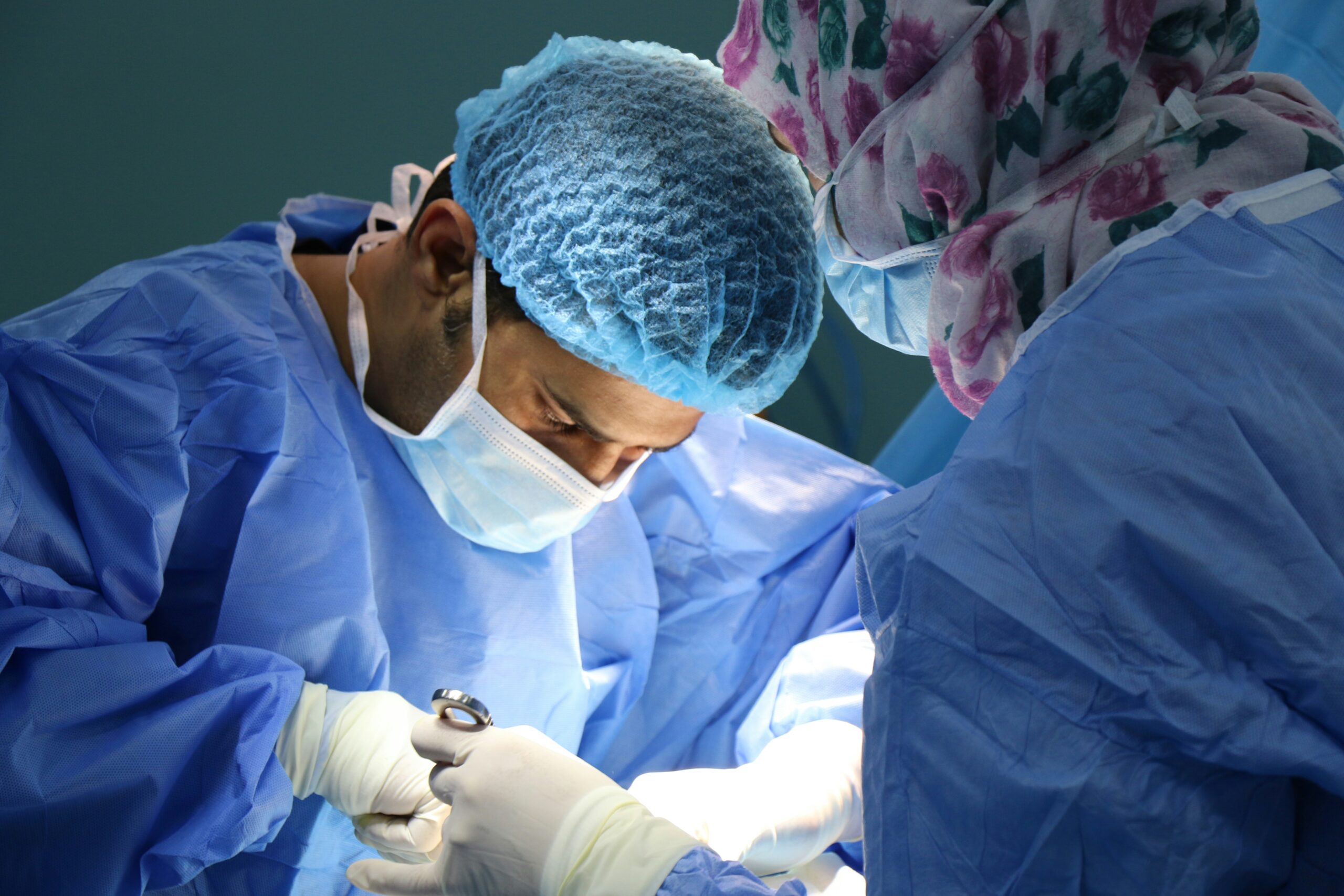Removal of the gallbladder is a surgical process called cholecystectomy. The procedure can be done in various ways. Still, the laparoscopic method of gallbladder removal is more commonly used as it is less invasive and allows for a quicker patient comeback.
The open technique was the standard before the 1990s, and the operation is still sometimes performed this way today, but only in particular situations.
Cholecystectomy is performed to treat various diseases and conditions related to the gallbladder and surrounding organs. There are multiple contraindications and indications for open or laparoscopic gallbladder removal. Pre-operative preparation and postoperative care are essential to ensure patients recover without complications. Find out more about the gallbladder removal procedure.

The gallbladder is an organ in the gastrointestinal tract located in the lower parts of the liver. The main goals of this organ include controlling bile levels and assisting in the digestion of fats. This part of the body is filled with bile and is relatively small. The gallbladder is divided into several essential parts, and its anatomical structure varies greatly.
Surgeons have to be very careful when performing cholecystectomy, as there are many anatomical variations in patients. As a result, a 15/20%![]() of patients may have altered anatomy after having their gallbladder removed. There are various ways to carry out the removal of the organ, and the decision is made by doctors, who determine which technique will be most beneficial for the patient based on history and examination. Cholecystectomy may be necessary for specific conditions and diseases, and surgical methods include:
of patients may have altered anatomy after having their gallbladder removed. There are various ways to carry out the removal of the organ, and the decision is made by doctors, who determine which technique will be most beneficial for the patient based on history and examination. Cholecystectomy may be necessary for specific conditions and diseases, and surgical methods include:
The procedure can be performed using the classical method, which used to be a popular technique for removing the gallbladder. The open technique consisted of an intraoperative examination of the bile ducts done by administering a shadowing substance, which allows observation of the biliary and pancreatic ducts during the operation. The traditional method is more common in less affluent communities and involves making a larger incision on the right side of the abdomen through which the gallbladder is removed.
The open method is more invasive and requires a longer comeback period, but it is sometimes necessary. Indications for open cholecystectomy include severe cases with extensive inflammation, damage, uncontrolled bleeding, and other problems. Situations of patients with comorbidities![]() or in critical condition
or in critical condition![]() may also require the open technique. Indications for the classical technique also include unclear patient anatomies causing visualization problems.
may also require the open technique. Indications for the classical technique also include unclear patient anatomies causing visualization problems.
When performing laparoscopic surgery, surgeons may change to an open technique where anatomical indications arise. Notably, compared to laparoscopic cholecystectomy, the open technique has no contraindications, excluding general contraindications to any surgical procedure.

Removal of the gallbladder laparoscopically is a minimally invasive surgical procedure. Today, the vast majority of cholecystectomies are done using this modern technique. The cholecystectomy involves making several small incisions in the abdomen. Surgeons then insert surgical instruments and a camera through these incisions to view the inside of the body, which allows greater control of the procedure. The gallbladder is removed through one of the incisions. The surgical instrument provides access to the inside of the abdominal cavity without the need for extensive dissection of the abdominal shell.
Laparoscopy is preferred because it can be performed in an outpatient setting. Recovery time is also shorter than the open technique, reducing from several weeks to about a week. This method is also associated with less postoperative pain and a lower risk of infection or scarring. However, there are contraindications to the laparoscopic method of gallbladder removal.
The indication for gallbladder removal requires prior diagnostic tests. Diseases and problems with the gallbladder must undergo a thorough diagnosis. Tests include a gallbladder ultrasound![]() , abdominal CT scan
, abdominal CT scan![]() , Hida test
, Hida test![]() , and blood tests
, and blood tests![]() . With the results, doctors can decide whether the gallbladder needs to be removed and can adjust the appropriate method. Indications for cholecystectomy include:
. With the results, doctors can decide whether the gallbladder needs to be removed and can adjust the appropriate method. Indications for cholecystectomy include:

Gallbladder inflammation in acute or chronic form may be an indication for surgery to remove the organ. The condition occurs due to bile outflow being blocked by a gallstone. Only a tiny percentage of inflammatory conditions are not related to gallstones. Cholelithiasis is the more common, while chronic inflammation is related to recurrent irritation by gallstones. Backlogged bile and the products of its chemical transformations irritate, resulting in inflammation.
Symptoms include primarily biliary colic, which is characterized by attacks of severe pain. Paroxysmal abdominal pain usually occurs after eating fatty food. Fever, chills, and different symptoms often accompany it. Acute cholecystitis requires hospitalization, while the stony form of the disease predisposes to surgical removal of the gallbladder. A complete cure for cholecystitis is possible by removing the organ and deposits.
Cholelithiasis is a medical condition in which there are deposits in the bile. An abnormality in the composition of the bile or the appearance of bacteria in the bile ducts causes a residue in the type of deposits. The deposits can form in the gallbladder or the bile ducts. The mechanism of gallstone formation is complex and depends on the mode of formation. Most deposits tend to have a mixed structure, which includes cholesterol.
Gallbladder stones are asymptomatic in most patients. However, gallstones can block the gallbladder's mouth, causing biliary colic. The most common complication of cholelithiasis is acute cholecystitis. In symptomatic cholelithiasis, the organ is removed during cholecystectomy. Pharmacological dissolution of the deposits may be attempted in patients with contraindications to surgical treatment of cholelithiasis.
Dyskinesias are defined as any disorder of the motor function. Motor disorders involve excessive or insufficient gallbladder contraction, which results in various symptoms. The signs are similar to those of other biliary diseases. Patients notice abdominal pain after eating and a feeling of fullness in the epigastrium. The causes of this biliary tract disease are not fully understood. After gallbladder resection surgery, additional measures may be necessary to relieve pressure and facilitate bile drainage.
A disease in which stones form in the pancreatic duct and obstruct the outflow of pancreatic juice into the gastrointestinal tract. When the pancreas is inflamed, the mineral salts in the pancreatic juice can precipitate, forming pancreatic stones. Pancreatic stone inflammation has symptoms similar to other diseases related to the bile ducts. These include numerous gastrointestinal complaints. Treating pancreatic stone disease boils down to removing stones from the pancreatic duct during surgery. Removal of the gallbladder is an ongoing part of treatment.
A gallbladder polyp is a nodular formation of connective tissue that forms in the gallbladder. In most cases, it is a cholesterol lump, but it can also be cancerous. Polyps in patients may not give any symptoms and are only detected in preventive examinations or when diagnosing a different condition. Symptoms, if they occur, are similar to those in gallstones. Laparoscopic cholecystectomy is done for treatment. If gallbladder cancer is strongly suspected, open surgery is done.

In the case of open gallbladder removal, contraindications include any situation that does not allow invasive surgery. Such examples include severe comorbidities and different life-threatening conditions. Conversely, contraindications to laparoscopic surgery include:
Metastatic disease refers to gallbladder tumors, which represent separate pieces of tumor that have migrated and initiated new tumors within different sites in the body. In these situations, the laparoscopic method of gallbladder removal may not be sufficient. Tumour polyps may have spread to different areas, so excision of any lesions is only possible during an invasive, open procedure.
Coagulopathy is a disorder of blood clotting that can be acquired or congenital and causes bleeding problems. Patients with abnormal coagulation may experience massive hemorrhages after various procedures, even minimally invasive ones. Proper blood coagulation is necessary to inhibit blood flow from the damaged vessel and stop the bleeding; therefore, open or laparoscopic procedures cannot be performed if abnormal coagulopathy is present, as they cause excessive blood loss.
Peritoneal emphysema is the entry of gases into the tissues or body cavities during surgery, where these gases are usually absent. The presence of gas can occur during gallbladder removal surgery. Therefore, if patients show intolerance to emphysema, they cannot have the procedure performed. Also, the response to general anesthesia![]() is essential. There are various contraindications to general anesthesia, with the absolute contraindication being an allergy to the anesthetic. To be sure if you are allergic, take allergy tests.
is essential. There are various contraindications to general anesthesia, with the absolute contraindication being an allergy to the anesthetic. To be sure if you are allergic, take allergy tests.

Removal of the gallbladder is a procedure that can cause various complications, mainly if a problem arises during the procedure. The complication rate is higher with the open technique, which is only used in exceptional cases. Complications of cholecystectomy include:
Typical complications include bleeding, which occurs due to the large vascularisation of the liver. As a result, surgeons performing the procedure must be skilled at it so as not to lead to significant blood loss in patients.
Surgery within the bile duct can damage it. Damage to the surrounding structure is possible, but the most severe complication is iatrogenic damage to the bile duct, the hepatic duct![]() . Damage to various areas during surgery may require additional measures from the surgeons, who must redirect bile flow into the intestines.
. Damage to various areas during surgery may require additional measures from the surgeons, who must redirect bile flow into the intestines.
Bile leakage can complicate surgery by causing symptoms such as abdominal pain and fever without accompanying hyperbilirubinemia. Patients may experience symptoms after the procedure, and their condition may require re-treatment. Surgery to remove the gallbladder may also cause gallstone retention.
Cholecystectomy procedures are invasive, so regardless of the technique, various symptoms may occur after the procedure. Patients need a certain amount of time to recover. However, the open technique is more likely to cause complications such as hernias![]() , hematomas
, hematomas![]() , and wound infections
, and wound infections![]() . In case of such problems, it is necessary to see a doctor. There may also be scarring after the procedure, a typical result of the skin incision.
. In case of such problems, it is necessary to see a doctor. There may also be scarring after the procedure, a typical result of the skin incision.

Patients with biliary problems should be informed about the various treatment options. The doctors make the indication to remove the gallbladder, but patients should also get all the information about the chosen technique, procedure, and risks of the procedure. Complications are possible regardless of the level of invasiveness of the method.
After cholecystectomy, patients need a certain amount of time to come back. In the case of the laparoscopic procedure, the recovery time is set at approximately one week, while in the case of the open method, recovery can take several weeks. After the operation, a careful lifestyle is also advised for several months. The doctor's recommendations should then be followed, which may be as follows:
It is normal for patients not to recover fully immediately after surgery. Therefore, it may be difficult to move around, especially during the first few days after surgery. It is important to take the necessary rest for recovery. Patients should approach physical activity with caution for a few weeks after surgery. Physical exertion should be limited and not overloading, as wound complications may occur.
A proper diet after surgery is essential in the case of surgery in the bile duct area. Removal of the gallbladder can cause short and long-term consequences. After the procedure, patients may experience symptoms such as abdominal pain, diarrhea, and bloating. Patients also notice a tendency towards weight gain and vitamin deficiencies after the procedure. The diet in post-cholecystectomy patients should be based on high amounts of fiber. Patients should also watch out for products that increase cholesterol levels.